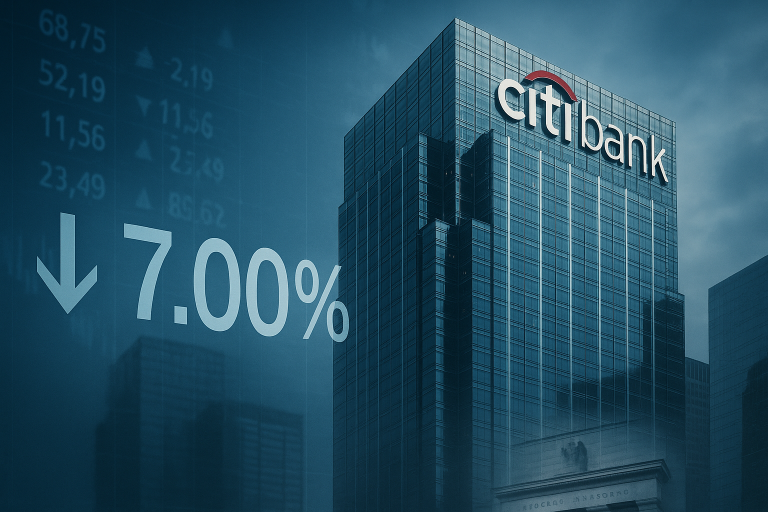Citibank surprised markets by lowering its base lending rate from 7.25% to 7.00% on Wednesday.
This isn’t just a technical adjustment; it’s a move with real consequences for consumers, businesses, and the broader economy.
At stake is more than mere bank rivalry.
The timing, coming just after the Federal Reserve trimmed its own rate to a range of 3.75%-4.00%, poses a provocative question: Is Citibank simply hustling to attract borrowers, or is it signaling a broader shift in monetary policy and economic momentum?
With inflation risks lingering and growth appearing fragile, Citibank’s rate cut could mark a critical turning point for US lending and economic prospects.
Why Citibank’s rate cut matters
The base lending rate might sound like dry banking jargon, but it’s actually the heartbeat of how borrowing works.
It sets the tone for everything, from your home loan and car EMI to how much a business pays to finance its next big project.
So when Citibank trims this rate, it’s not just a small tweak; it’s a signal. Borrowing just got a bit cheaper for homebuyers, entrepreneurs, and big corporations alike.
The timing here is no coincidence. The move comes right after the Federal Reserve’s own rate cut and at a moment when markets are buzzing with talk of more easing ahead.
Citi’s own research team notes that softer labor data has raised expectations for further rate reductions.
In other words, Citibank seems to be moving in step with the Fed, preparing for a slower growth phase and trying to nudge more lending activity into gear.
Lower rates can be like a shot of caffeine for the economy. People might start taking loans for homes or cars, and businesses could ramp up investment.
But it’s not all upside down. Cheaper loans also mean thinner margins for banks, and if the economy’s footing is already shaky, extra credit doesn’t always spark a boom.
Some analysts are reading this as a cautious signal: Citibank wants to spur lending, but it might also be quietly bracing for tougher times ahead.
Economic signals: Pivot or precursor?
Is this a play for market share or a warning sign for the economy? Citibank’s decision, paired with the Fed’s recent cut, points toward expectations of a looser policy landscape ahead.
Citi’s market commentary predicts a cheaper dollar and softer US interest rates into year-end, hinting at global spill-overs: a weaker dollar may boost emerging markets and exporters.
But with inflation still sticky, the Federal Reserve remains vigilant about not loosening too aggressively. Any pickup in lending must be balanced against inflationary risks, with Citi noting further rate cuts could pressure long-duration bonds.
For anyone borrowing money, this is welcome news. Lower rates mean loans get a little lighter on the wallet, making it easier for people to buy homes, start businesses, or just spend a bit more confidently.
But for Citibank, this isn’t just about helping borrowers; it’s also a smart competitive play. By cutting rates early, the bank puts itself in a good position to grab more lending business before others jump in.
Now the real questions begin. Will the other big banks follow suit, or will they wait and see how this plays out? How will savers react if deposit rates start slipping, too?
And maybe the biggest question of all, will cheaper money actually give the economy a lift, or is this just a cautious move in a market that’s starting to show a few cracks?
The post What Citibank’s rate cut tells us about the next big move in the economy appeared first on Invezz

